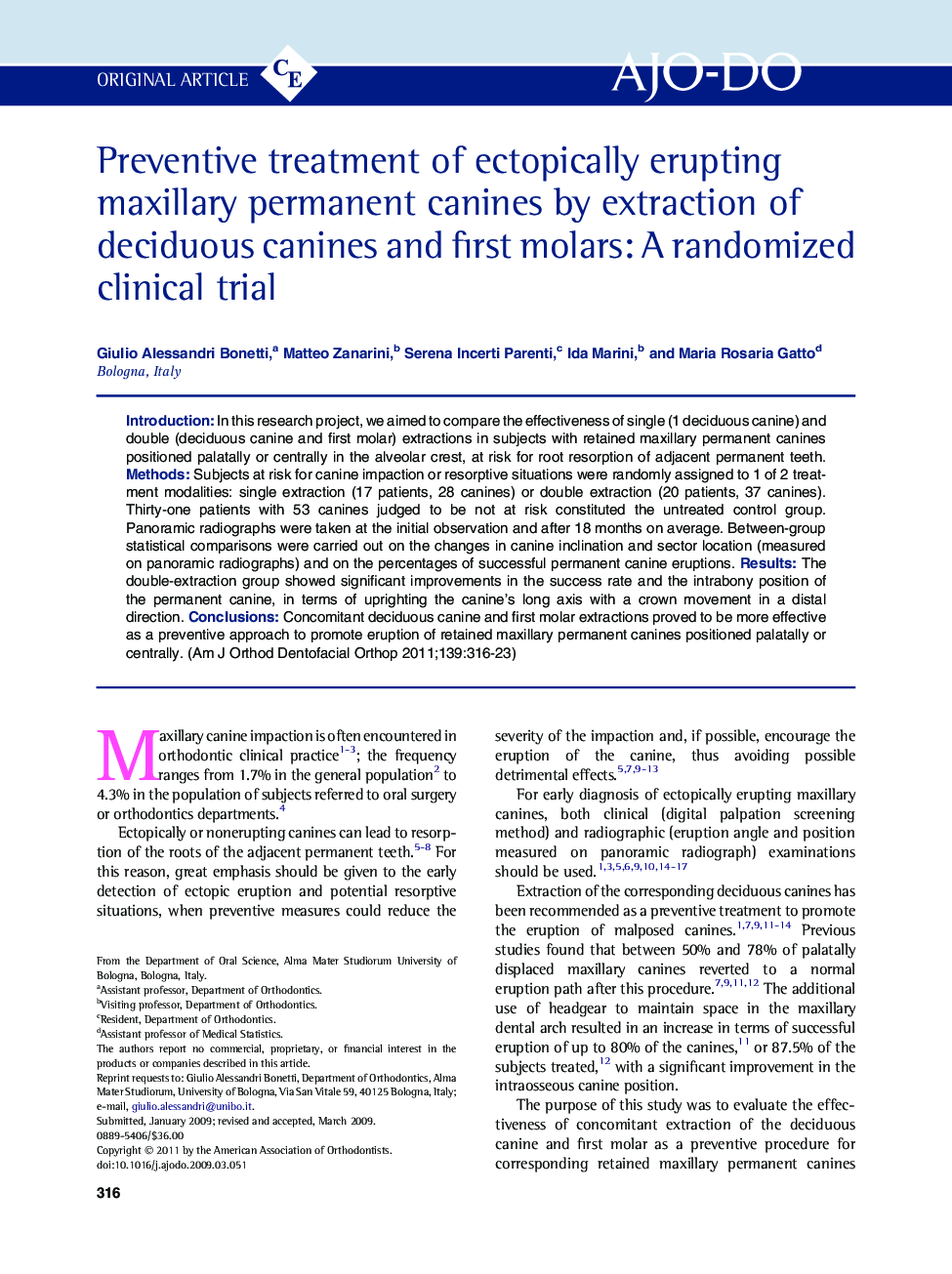| Article ID | Journal | Published Year | Pages | File Type |
|---|---|---|---|---|
| 3117121 | American Journal of Orthodontics and Dentofacial Orthopedics | 2011 | 8 Pages |
IntroductionIn this research project, we aimed to compare the effectiveness of single (1 deciduous canine) and double (deciduous canine and first molar) extractions in subjects with retained maxillary permanent canines positioned palatally or centrally in the alveolar crest, at risk for root resorption of adjacent permanent teeth.MethodsSubjects at risk for canine impaction or resorptive situations were randomly assigned to 1 of 2 treatment modalities: single extraction (17 patients, 28 canines) or double extraction (20 patients, 37 canines). Thirty-one patients with 53 canines judged to be not at risk constituted the untreated control group. Panoramic radiographs were taken at the initial observation and after 18 months on average. Between-group statistical comparisons were carried out on the changes in canine inclination and sector location (measured on panoramic radiographs) and on the percentages of successful permanent canine eruptions.ResultsThe double-extraction group showed significant improvements in the success rate and the intrabony position of the permanent canine, in terms of uprighting the canine’s long axis with a crown movement in a distal direction.ConclusionsConcomitant deciduous canine and first molar extractions proved to be more effective as a preventive approach to promote eruption of retained maxillary permanent canines positioned palatally or centrally.
